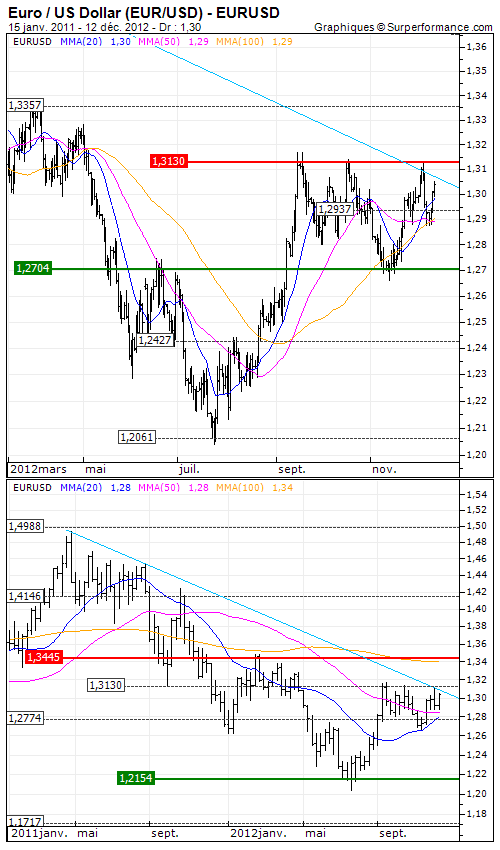Euro / US Dollar (EUR/USD) : Upper bound of a trading range as target
By Alexandre Nutte
Regardless of whether the Eurozone fell into recession in the third quarter, if the ECB now expects a contraction next year or if the Bundesbank has greatly lowered its forecast for Germany in 2012 and 2013. Regardless of whether Moody's private turn France's triple A or Mario Monti announced his resignation. No matter until the creditors of Greece again ruled systemic risks and the domino effect by announcing the release of further aid to Athens. No matter as the Central Bank reassures investors in being ready to intervene if necessary.
While long-term rates of the countries in difficulty return to levels not seen for several months, the euro, correlated with risk also benefits from better terms of the global economy. U.S. GDP has just been revised to 2.7% year on year in the third quarter, against an initial estimate of 2%, while the unemployment rate fell to 7.7%, its lowest level since late 2008. Pending the end of negotiations on the fiscal cliff investors are finally excited about the positive figures from China, the engine of international activity.
Graphically, in weekly data, the Euro still oscillates above its 50-week moving average around 1.30. A recent approach to test 1.3130 suggests the possibility of an acceleration towards our long-term resistance. Despite an initial failure to this intermediate level and even if the Euro will probably need more catalysts to increase, the lack of attraction of the dollar, combined with the mitigation of major risks in Europe could ultimately lead the parity to USD 1.3445 at the beginning of 2013.



